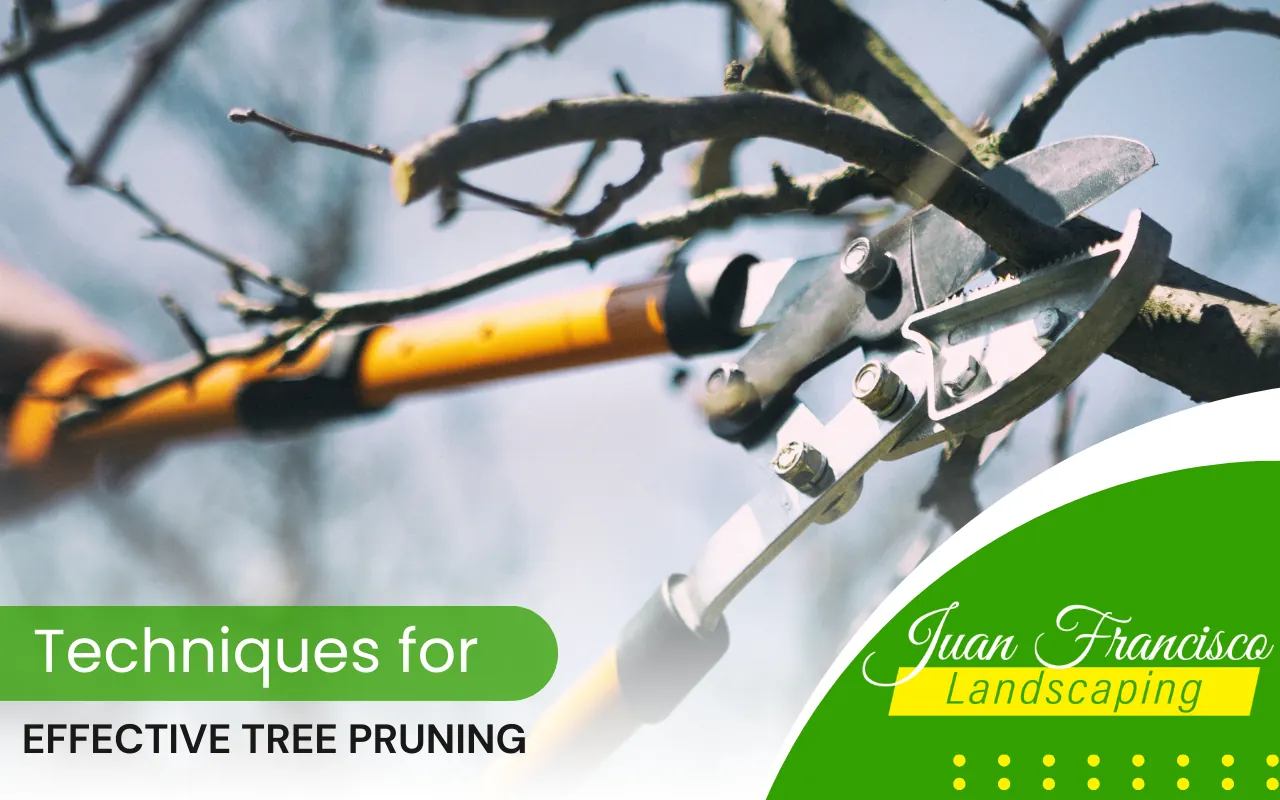
Tree Pruning Techniques for Healthier and Stronger Trees
Tree care is essential for maintaining a safe and beautiful landscape. However, many people struggle to prune trees correctly. Using the right tree pruning techniques improves tree health, prevents hazards, and enhances overall appearance. When done properly, pruning encourages strong growth and reduces the risk of disease. Whether you are shaping a young tree or maintaining an older one, understanding effective pruning methods is key. This guide will help you learn when, why, and how to prune your trees the right way.
Tree Pruning Techniques for Healthier Trees
Why Tree Pruning is Important
Pruning is more than just cutting branches. It keeps trees healthy, strong, and visually appealing.
- Removes dead or diseased branches that could cause decay.
- Encourages strong growth by allowing sunlight and air to reach inner branches.
- Prevents safety hazards by eliminating weak or overhanging limbs.
Regular pruning also improves the tree’s structure, helping it withstand harsh weather conditions.
Best Times to Prune Different Trees
Timing is important when pruning trees. Cutting at the wrong time can slow growth or weaken the tree.
- Deciduous trees – Prune in late winter or early spring before new growth starts.
- Evergreen trees – Light pruning in late winter; avoid heavy trimming in summer.
- Flowering trees – Trim right after blooming to encourage next season’s flowers.
Knowing the best time to prune helps trees heal faster and maintain their natural shape.
Essential Tree Pruning Tools
Using the right tools makes pruning easier and more effective. Sharp, clean tools prevent damage and allow precise cuts.
- Hand pruners – Best for small branches and detailed shaping.
- Loppers – Ideal for medium-sized branches requiring more leverage.
- Pole pruners – Help reach higher branches without a ladder.
- Pruning saws – Used for thicker branches that require strong cuts.
Keeping tools sharp and clean ensures healthy cuts and faster healing for trees.
Types of Tree Pruning Techniques
Different pruning methods serve different purposes. Using the right technique promotes healthy growth and improves tree structure.
- Thinning – Removes excess branches to improve airflow and light exposure.
- Crown Raising – Trims lower branches to create space beneath the tree.
- Crown Reduction – Reduces tree size while keeping a balanced shape.
- Deadwooding – Eliminates dead, weak, or diseased branches to prevent decay.
- Structural Pruning – Shapes young trees to encourage strong, stable growth.
Choosing the right technique ensures trees stay healthy, strong, and visually appealing.
Common Tree Pruning Mistakes to Avoid
Pruning mistakes can weaken trees and cause long-term damage. Avoiding these errors helps trees grow properly.
- Cutting too close to the trunk – Can damage the tree and slow healing.
- Over-pruning – Removing too many branches weakens the tree.
- Using dull tools – Causes uneven cuts and makes trees vulnerable to disease.
Proper pruning techniques protect trees from stress and promote steady growth.
Safety Tips for Pruning Large Trees
Pruning large trees can be dangerous. Following safety measures prevents injuries and property damage.
- Wear protective gloves and safety glasses when cutting branches.
- Use a stable ladder and avoid working alone.
- Never prune near power lines—contact a professional if needed.
If branches are too high or difficult to remove, hiring a professional ensures safe and effective pruning.
FAQs About Tree Pruning Techniques
How often should trees be pruned?
- Most trees need pruning every 1-3 years, depending on their growth rate and condition.
Can I prune trees myself, or should I hire a professional?
- Small trees can be pruned yourself, but large or hazardous branches require expert care.
What happens if a tree is not pruned regularly?
- Overgrown trees may develop weak branches, uneven growth, and potential safety risks.
Is there a wrong time to prune trees?
- Yes. Avoid pruning during extreme heat or freezing temperatures, as it can stress the tree.
Enhance Your Landscape with Professional Tree Pruning
Proper tree pruning techniques improve tree health, enhance safety, and boost curb appeal. However, knowing when and how to prune can be challenging. If you need seasonal tree care, structural pruning, or deadwood removal, expert services ensure the job is done safely and effectively. Contact us today for a free estimate from an insured company with over 13 years of experience. Let’s help you maintain strong, beautiful trees year-round.
